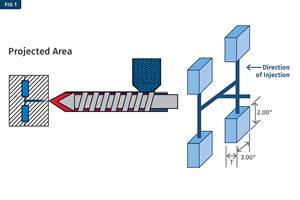Today's Lesson: Drying (Part 1)
Listen up, please: This is going to make your life easier.
Listen up, please: This is going to make your life easier. It might even save your job or company. We’re going to talk about drying, and even if you’ve heard it all before, my experience tells me maybe it didn’t all sink in.
Why do you have to dry plastic in the first place? You’re right, to get rid of the moisture. But why does the moisture have to be taken out before processing? And what about the fact that most resins pick moisture up again right out of the dryer and after the part is molded? So why bother?
Well, you bother because if you process nylon, PC , PBT, PET, or a host of other resins without taking the water out, you wind up destroying the physical properties of that resin and part. Believe it or not, water causes a chemical reaction (hydrolysis) to take place in the barrel, which makes the long polymer chains shorter. Long chains give decent properties; short chains mean failing parts. I don’t mean splay, which indicates a gross amount of water. It only takes a wee bit of water (parts per million) to do the damage. Parts will look OK, but not perform. Worse, if the failed part makes its way into the market and a lawsuit ensues, you have left your fingerprints all over it. That’s because the part can be easily analyzed to check chain size. Therefore, a smart molder makes sure the dryer works. You will have fewer processing hassles, as moisture often influences viscosity. Quite simply, drying consistently and correctly provides for a more robust and stable process.
So, what should you look for? Let’s use PC as an example. It’s easy to say, “Dry PC at 250F (120C) for 4 hr,” but the details are devilish. Let’s start with the hopper. Guess what? Ninety-five percent of the industry uses the wrong angle (120o) on the cone at the bottom of the hopper; it should be 60o. Ask a farmer why. That’s right—farmers have learned a better way. It has to do with solids flow through the hopper. It is unbelievable that our industry has been doing it WRONG for 40 years, and no one wants to change.
Next, what is the temperature at the inlet? It should be 250 F. Check it, and better yet, put a cheap thermometer on the inlet and the outlet. Make them easy to check; if it is easy, it might get noticed. Hey, you might even check it. Looking at those thermometers carefully will teach you some important things. If the temperature on the outlet is below about 200 F (96 C), for example, something’s wrong. You have a leak, most likely at the loading port. With all of the loading, cleaning, etc. done via that port, why aren’t the gaskets made like those on a refrigerator door—i.e, self-sealing? What a novel idea!
Does the hot dry air delivery tube go down into the very bottom of the cone? If not, the bottom 25 to 75 lb of resin will never see the drying air. Before you start the machine, drain the granules below the inlet-air distribution hardware and put them back in on top. If you process this bottom “wet” resin you’ll destroy its properties. That means, in most cases, you should not use regrind from parts molded with that incorrectly dried resin. Once the long chains are broken, you can’t put them back together again—redrying won’t help.
Tip for the month to save a job: Find the hot-air exit port for the desiccant regeneration circuit on your dryer. Check the temperature of that hot humid air coming out during regeneration. Now go get a bright manager/owner and hold his hand over it while regeneration is on. Then ask yourself and him, would you want to vent 350 F to 450 F humid air into your air-conditioned home during the summer? See if any “green” ideas that would save on the air-conditioning bill come to mind? While you’re at it, ask yourself whether the air delivery and return hoses should be insulated.
About the Author
John Bozzelli is the founder of Injection Molding Solutions (Scientific Molding) in Midland, Mich., a provider of training and consulting services to injection molders, including LIMS and other specialties. E-mail john@scientificmolding.com or visit scientificmolding.com.
Related Content
Attending NPE2024 From the Perspective of a Molder
NPE2024 has come and gone, but before it’s completely in our collective rearview, Plastics Technology asked Rodney Davenport, vice president at injection molder CH3 Solutions, for a processor’s perspective on the big show.
Read MoreDiagnosing Defects: Determine True Root Cause Before Adjusting a Process
Common defects can have common causes — flash equals worn mold shutoffs, right? Except when they don’t. Trust your eyes, but verify the root cause before adjusting a process.
Read MoreA Systematic Approach to Process Development
The path to a no-baby-sitting injection molding process is paved with data and can be found by following certain steps.
Read MoreIs There a More Accurate Means to Calculate Tonnage?
Molders have long used the projected area of the parts and runner to guesstimate how much tonnage is required to mold a part without flash, but there’s a more precise methodology.
Read MoreRead Next
For PLASTICS' CEO Seaholm, NPE to Shine Light on Sustainability Successes
With advocacy, communication and sustainability as three main pillars, Seaholm leads a trade association to NPE that ‘is more active today than we have ever been.’
Read MoreBeyond Prototypes: 8 Ways the Plastics Industry Is Using 3D Printing
Plastics processors are finding applications for 3D printing around the plant and across the supply chain. Here are 8 examples to look for at NPE2024.
Read More









